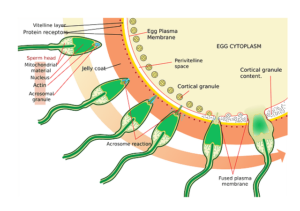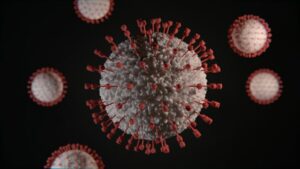In this article, we will help students identify the easiest and most scoring Class 12 Biology Chapters. Kick-start your preparation with these chapters and then slowly move onto the harder portions of the syllabus. Working consistently and staying motivated is the key to success. As long as you have a clear plan and complete your tasks daily, you should not encounter any problems in achieving your targets. Now, let us take a look at the chapters in question here:
Reproduction

This is the first unit of Class 12 Biology. Reproduction as a whole is dealt with here – its importance, modes of reproduction, and its types in both plants and humans, Although Human Reproduction is a lengthy chapter that needs to be studied in detail, a few chapters of this unit are quite easy and can fetch you good marks. These are:
- Chapter 1: Reproduction in Organisms
- Chapter 4: Reproductive Health
The first chapter distinguishes between a non-living and a living organism. Reproduction is defined as a characteristic feature of most living organisms that helps in the continuation of all species. Topics like binary fission in amoeba, sporulation in fungi, budding in yeast, gemmule formation in sponges, and fragmentation in Planaria are discussed. Vegetative propagation in plants is very important from the examination point of view. All the examples associated with vegetative propagation have to be at students’ fingertips as these are often asked in both oral assessments as well as theory papers. Chapter 4 mainly deals with contraceptive methods and the need for maintaining optimal reproductive health for the upliftment of society. In-vitro methods of fertilization are explained such as Intra-Uterine Transfer (IUT), Intra Cytoplasmic Sperm Injection (ICSI), Gamete Intra Fallopian Transfer (GIFT), and so on. Students do not need to go into the details of every method. Just knowing the name of the method and what it implies will suffice. In addition to this, knowing about venereal diseases or sexually transmitted infections is also important. Preventive methods need to be studied.
Biology and Human Welfare
This unit contains chapters that cover a lot of topics that have never been discussed previously. This is why certain concepts can be difficult for students to grasp initially but with continued revision, they will become easier to understand. The chapter Human Health and Diseases deals with a number of parasites and the diseases they cause in humans. Diseases like Filariasis and Ascariasis are mentioned for the first time. However, the remaining two chapters are quite simple and scoring too. These are:
- Chapter 9: Strategies for Enhancement in Food Production
- Chapter-10: Microbes in Human Welfare

Chapter 9 talks about modern innovations that have led to an increase in crop yield. The steps involved in tissue culture and plant breeding are mentioned along with the advantages of these processes. Spirulina is a single cell protein source on which questions are set very frequently. In addition to this, a brief summary of apiculture and animal husbandry is provided. These topics are fairly easy and can help a student score well even if they study less but just cover the important portions of each chapter. In Chapter 10, students are taught about certain bacterial and fungal agents that play a crucial role in our everyday lives. Something as simple as the curdling of milk to create curd requires microbial action. The discovery of Penicillin is also discussed in detail alongside the classification of antibiotics for medical use.
Ecology and Environment

This is the tenth unit of the CBSE Biology curriculum. It consists of 4 chapters originally but some reduction has been done in the syllabus keeping in mind the effect on academics due to the Covid-19 pandemic. The unit includes
- Chapter 13: Organisms and Populations
- Chapter 14: Ecosystem
- Chapter 15: Biodiversity and its Conservation
- Chapter 16: Environmental Issues
Almost 30% of the Class 12 Biology board examination paper is set from this unit. Ecology and Environment form a significant chunk of the syllabus for competitive exams too. However, given the marks weightage of this unit, the topics included in it are relatively easy. Next to no conceptual understanding is required to score well here. There are a few typical questions asked, the answers to which just need to be memorized. Great importance is given to the chapter Biodiversity and its Conservation specifically. Information regarding IUCN’s Red Data Book is frequently asked along with the names of biodiversity hotspots, wildlife parks, and sanctuaries. In Chapter 13: Organisms and Populations, students need to know the different types of population interactions thoroughly with their examples. Questions on mutualism and predation are commonly asked in most board exams. In addition to this, from the last chapter, students just need to have a basic overview of radioactive waste management, the greenhouse effect, and its resultant effect on climate change.
With the help of the right study strategy, students will easily be able to score well by going through these aforementioned chapters. You can now study smart and save time all while not compromising on results. However, you cannot rely on these chapters alone if you are aiming to score very high marks in boards or other competitive and entrance exams. Attention to other chapters also has to be given in a systematic manner. Know which concepts are important by referring to previous year papers and then build on your existing knowledge about these concepts.















